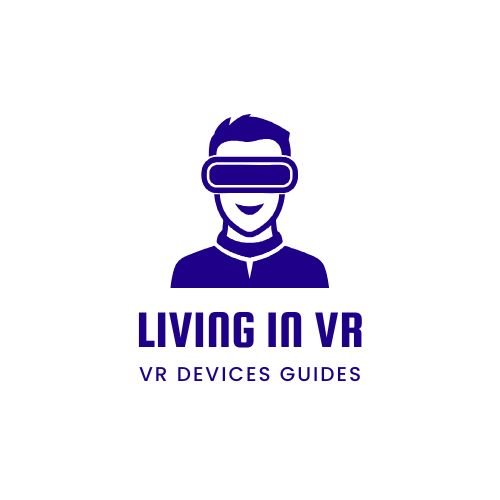To export 360° videos to YouTube successfully, you’ll need to render your content in equirectangular format at high resolutions like 3840×2160, configure frame rates between 24-60 FPS, and export as MP4 files. Next, inject spatial metadata using tools like Spatial Media Metadata Injector, upload through YouTube’s standard interface, enable proper video tags, and monitor the processing time for 360-degree activation. Following these seven essential methods guarantees your immersive content displays correctly and captivates viewers with seamless navigation capabilities.
Render Videos in Equirectangular Format With Optimal Resolution Settings

When exporting 360° videos for YouTube, you’ll need to render them in equirectangular format with specific resolution settings to guarantee proper playback. The equirectangular format guarantees your spherical footage displays correctly across YouTube’s platform and maintains the immersive viewing experience.
Equirectangular format with proper resolution settings guarantees your 360° videos display correctly and maintain immersive viewing experiences on YouTube.
You should select high-quality resolutions like 3840×2160 or 4096×2048 for the best output. These settings provide crisp detail that enhances viewer engagement with your 360° content. Lower resolutions can greatly diminish the immersive quality and make your video appear pixelated when viewers explore different angles.
Before rendering, verify your editing software’s export settings are configured for 360° content. Double-check that the equirectangular format is properly selected and your chosen resolution matches YouTube’s recommended specifications.
This attention to detail prevents playback issues and guarantees your audience experiences your content as intended.
Configure Frame Rates and Export Settings for YouTube Compatibility
You’ll need to select the right frame rate from YouTube’s supported options of 24, 25, 30, 48, 50, or 60 FPS to match your content’s intended viewing experience.
Your export format must be MP4 to guarantee compatibility with YouTube’s platform requirements.
You should prioritize high-quality output settings during export to maintain the video’s integrity and deliver an ideal viewer experience.
Optimal Frame Rate Selection
Selecting the right frame rate for your 360° video directly impacts both the viewing experience and YouTube compatibility. YouTube supports specific frame rates for 360° content: 24, 25, 30, 48, 50, or 60 FPS. Your ideal frame rate selection depends on your content’s nature and intended viewing experience.
For fast-paced action sequences, choose higher frame rates like 50 or 60 FPS to capture smooth motion and reduce blur. These rates enhance immersive experiences where viewers might quickly look around the 360° environment.
For cinematic or slower-paced content, lower rates such as 24, 25, or 30 FPS work effectively while reducing file sizes.
Maintain consistent frame rates throughout your YouTube video to prevent playback issues. Match your export settings to your source footage’s frame rate when possible for best quality.
Export Format Requirements
Beyond choosing the appropriate frame rate, your 360° video must meet specific technical requirements to work properly on YouTube’s platform.
The export format requirements are vital for guaranteeing your content displays correctly as immersive 360° footage.
Your video file must follow these essential specifications:
- Format and Resolution: Export in equirectangular format with minimum 4K resolution (3840×2160) or cinema 4K (4096×2048) to maintain visual quality across all viewing devices.
- File Type: Save as MP4 format, which YouTube recommends for ideal compatibility and streaming performance.
- Metadata Integration: Inject spatial metadata using tools like Spatial Media Metadata Injector after exporting to enable YouTube’s 360° recognition system.
Meeting these technical standards guarantees your immersive content will upload successfully and provide viewers with the intended spherical experience.
Resolution Quality Standards
Resolution standards directly impact how viewers experience your 360° content on YouTube’s platform. You’ll need to meet specific resolution quality standards to guarantee ideal playback across devices. YouTube recommends exporting at 3840×2160 (4K) or higher to maintain visual clarity in the immersive format.
| Resolution | Quality Level | Recommended Use | File Size Impact |
|---|---|---|---|
| 1920×960 | Basic | Testing/previews | Smallest |
| 2880×1440 | Standard | General content | Medium |
| 3840×2160 | High (4K) | Professional work | Large |
| 5760×2880 | Premium | Cinema-quality | Largest |
Higher resolutions provide sharper details but increase upload times and processing requirements. You should balance quality expectations with your audience’s typical viewing devices and internet speeds when selecting resolution quality standards for your exports.
Inject Spatial Metadata Using Dedicated Applications
While your 360° video might look perfect in your editing software, YouTube won’t recognize it as immersive content without proper spatial metadata.
Perfect-looking 360° videos in editing software won’t display as immersive content on YouTube without the proper spatial metadata injection.
You’ll need the Spatial Media Metadata Injector application to solve this problem. This free tool works on both Mac and Windows systems.
Here’s how to inject the necessary metadata:
- Select your video file in the Spatial Media Metadata Injector application and check the “Spherical” option to inject proper metadata.
- Save the newly created file in the same location as your original to maintain organized file management.
- Wait patiently for the injection process to complete, which can take several minutes depending on your video’s size.
After uploading, YouTube needs up to an hour to process the 360-degree effect.
Upload MP4 Files Through YouTube’s Standard Interface

Once you’ve injected the spatial metadata into your MP4 file, you can upload it through YouTube’s standard interface just like any regular video.
Navigate to YouTube Studio and click the “Create” button, then select “Upload videos.” Choose your metadata-injected MP4 file, guaranteeing it meets YouTube’s resolution requirements like 3840×2160 or 4096×2048 in equirectangular format.
During upload, add your title, description, and tags. Consider mentioning communities like X Series Official Community if relevant to your content.
After publishing, YouTube needs up to an hour to process and recognize the 360° metadata. Once processing completes, viewers will see the 360° navigation controls.
Ascertain your file adheres to YouTube’s time limits and size restrictions for successful upload.
Enable 360-Degree Video Tags and Privacy Settings
After uploading your 360° video, you’ll need to configure specific settings to confirm YouTube properly recognizes and displays your content.
First, verify you’ve injected the proper metadata using tools like the Spatial Media Metadata Injector before uploading. This step’s essential for YouTube to detect your 360-degree video format automatically.
Proper metadata injection is the critical first step that ensures YouTube automatically recognizes your 360-degree video format.
Next, configure these necessary settings:
- Privacy Settings: Choose public, unlisted, or private based on your intended audience during the upload process.
- 360-Degree Tag Verification: Check that the “360” tag appears in your video settings, confirming YouTube recognizes the immersive format.
- Processing Time: Allow up to one hour for YouTube to fully process and enable the 360-degree viewing functionality.
Access your video settings post-upload to adjust these 360-degree viewing options for best viewer experience.
Monitor Processing Time for 360-Degree Effect Activation

After you’ve uploaded your 360° video with proper tags and privacy settings, you’ll need to wait for YouTube’s processing system to activate the immersive viewing experience.
The processing time can extend up to an hour depending on your video’s length, resolution, and YouTube’s current server load.
You can track the activation status through YouTube Studio, where you’ll see when the 360-degree playback option becomes available to viewers.
Processing Timeline Expectations
When you upload your 360° video to YouTube, the platform needs time to process the specialized metadata that enables the interactive viewing experience.
You’ll typically wait up to one hour before the 360-degree effect becomes fully functional for viewers.
The processing timeline varies depending on several factors:
- Video length – Longer videos require extended processing time to analyze and implement 360° functionality.
- Resolution quality – Higher-resolution uploads demand more computational resources and additional processing time.
- Platform workload – YouTube’s current server capacity affects individual video processing speeds.
During processing, your video won’t display 360° features, so don’t panic if the interactive elements aren’t immediately available.
YouTube doesn’t provide specific time estimates for individual uploads, but you can monitor the processing status through your channel dashboard to track progress.
Activation Status Indicators
While your 360° video uploads to YouTube, you’ll want to track its processing status to confirm the interactive features activate properly.
YouTube provides clear activation status indicators throughout the processing phase, which can take up to an hour depending on your video’s length and resolution.
You can monitor progress by checking your video’s playback settings once the initial upload completes. YouTube will display specific notifications indicating when the 360-degree effect becomes ready for viewer interaction.
These activation status indicators help you verify that everything’s working correctly.
If the 360-degree functionality doesn’t activate within the expected timeframe, it typically signals metadata injection issues or format compatibility problems.
Always use the Spatial Media Metadata Injector before uploading to prevent activation delays.
Troubleshoot Common Upload Errors and Quality Issues
Although 360° video uploads to YouTube can seem straightforward, you’ll often encounter specific errors and quality issues that necessitate targeted solutions.
Here are three critical troubleshooting steps to resolve common upload problems:
- File Format and Metadata Verification – Confirm your video’s exported in equirectangular format as an MP4 file, then use the Spatial Media Metadata Injector to embed proper 360° metadata before uploading.
- Quality Control Assessment – Check your video’s resolution and stitching quality beforehand, aiming for high resolutions like 3840×2160 to prevent post-upload quality degradation.
- Upload Environment Optimization – Address file size limits and guarantee stable internet connectivity to prevent upload failures or interruptions.
After uploading, allow up to an hour for YouTube’s processing to activate the 360° effect properly.
Frequently Asked Questions
How Do I Export a 360 Video to Youtube?
You’ll render your video in equirectangular format as an MP4 file, use Spatial Media Metadata Injector to add 360° metadata, then upload to YouTube and wait for processing.
How to Use 360 Video on Youtube?
You’ll navigate 360° videos on YouTube by clicking and dragging to look around, using arrow keys, or tilting your mobile device. The 360° icon appears once processing completes after upload.
How Do You Extract Videos From Insta360?
Open your Insta360 app and find the video in your media library. Select it, tap “Export,” choose your preferred resolution and MP4 format, then select equirectangular format for proper playback.
How Do I Export a 360 Video From Premiere to Youtube?
You’ll export using H.264 format, check the VR checkbox, set resolution to 3840×2160 or higher, inject spherical metadata with Spatial Media Metadata Injector, then upload to YouTube for processing.





Leave a Reply